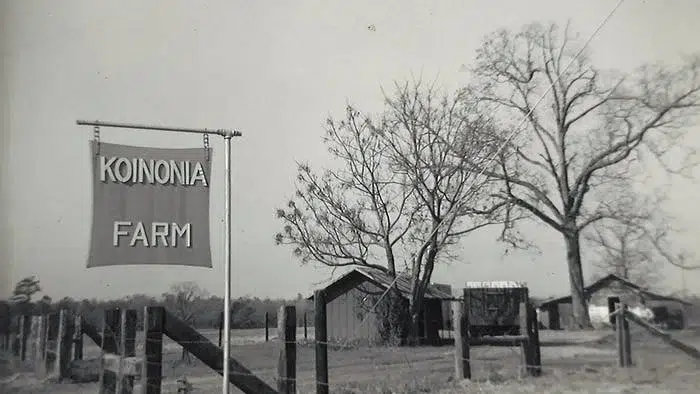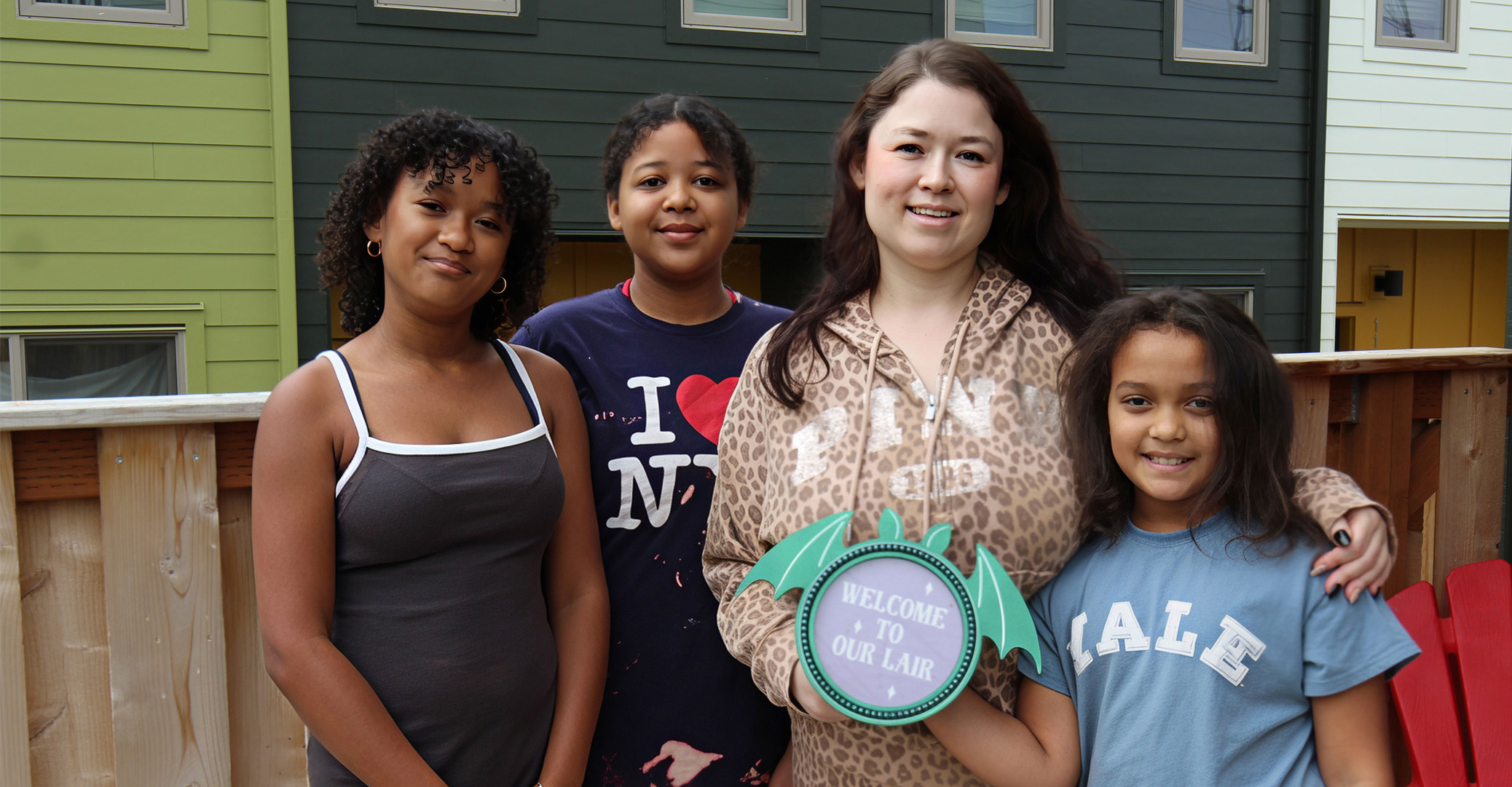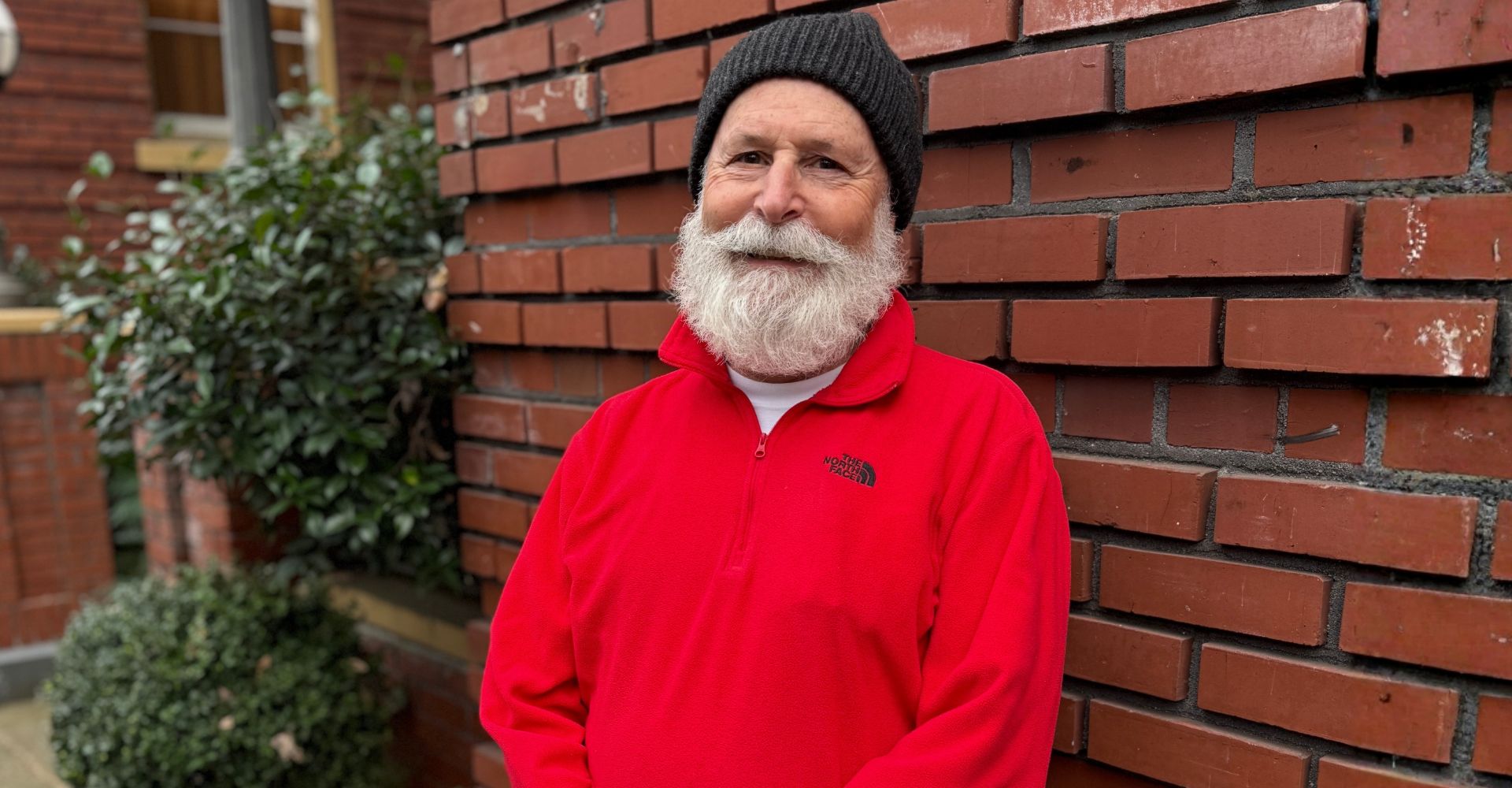
In 1968, Clarence Jordan, the founder of Koinonia Farm, penned a do-or-die letter to the revolutionary, interracial farming community he helped create 25 years earlier.
“For several years it has been clear that Koinonia stands at the end of an era or perhaps its existence,” he began. “Its goals and methods, which were logical and effective in the 1940s and 50s, seem no longer relative to an age which is undergoing vast and rapid changes.”
Those changes were both economic and social, including industrial approaches to farming that had pushed “sharecroppers, tenants, and small farmers off the land and into the ghetto,” Jordan said. Unable to afford to farm or live in their community, people were moving to the cities. The population of Koinonia Farm, nestled in the rural Sumter County of Georgia, had once numbered in the 60s but had declined to only a handful by 1968.
“Something had to give,” Jordan wrote. “The obvious answer was to call it quits,”
The letter signaled a turning point for the community that had set a benchmark for “radical hospitality” and racial and economic integration during a period of intense civil strife. Quite the opposite of calling it quits, Jordan’s letter outlined the foundation for what would become Habitat for Humanity, which next year will celebrate 50 years of building homes across the globe for people who need a safe place to live and thrive.
Radical Hospitality
Koinonia, pronounced koi-no NEE ya, was founded in 1942 as a Christian community by Jordan his wife, Florence, and Martin and Mabel England. England and Jordan were Baptist ministers who sought to put their faith to action, naming their new, intentional community after the Greek word meaning a deep and abiding fellowship, a common bond. They sought to teach responsible farming techniques so people could sustain themselves.
From the start, Koinonia Farm was an oddity for the Jim Crow ways of rural Georgia. While the rest of the South promoted racial segregation, discrimination, and oppression, Koinonia Farm welcomed all, Black and White, and treated everyone as equals. They were paid equally, they shared equally the bounty of the land and sales from their cash crops, and they communed together for prayer and meals. Beyond the farm, the Civil Rights Movement was still in its infancy, and segregation permeated almost every aspect of daily life.
The farm and its fellowship, Black and White, prospered, growing from the original 400 acres to more than 1,000.
Koinonia was just in its first year when the people of Sumter County began warning the integrated, interracial, Christian Community that it was violating local norms. The mere act of Black and White people dining together was an unforgivable transgression under Jim Crow. In the 1950s and 60s, the community endured years of racially motivated violence from the Ku Klux Klan and others who didn’t like the Farm’s model of racial equality, pacificism, and economic sharing.
Andrew Young, former UN Ambassador and Civil Rights activist, was a contemporary of Jordan, and spoke to learning about Koinonia in Frederick L. Downing’s book, Clarence Jordan: A Radical Pilgrimage in Scorn of the Consequences.
“When we first heard about Clarence Jordan and Koinonia, we considered it too radical, too dangerous,” Young said. At the time, Young and Dr. Martin Luther King Jr. were working to get Black people the right to ride buses and shop in local stores. “(B)ut here was Clarence — smack dab in the middle of Ku Klux Klan country — going for the whole loaf! Clarence put the rest of us to shame until we did something about it.”
Former President Jimmy Carter, another Sumter County resident who would go on to become Habitat for Humanity’s most ardent advocate and volunteer, called Koinonia “beacon-like for people who believed in racial equality.”
When Jordan endorsed the applications of two African Americans to a Georgia state college, the harassment escalated. Several farmers were removed from their local church membership rolls after it was thought they were trying to racially integrate the congregation. Koinonia residents were taunted on the streets of Americus.
Its roadside market was bombed and set on fire, and another building on the farm was burned to the ground. Drive-by shootings into the farm from the road were common. Their pecan trees, a vital source of income, were chopped down and fences were cut to release their pigs. Their insurance policies were cancelled because of all the damage being done.
A 1956 Time Magazine article summed up the situation in its lead:
“Things were quiet at Koinonia Farm last week. Not many tourists stopped at the newly reopened roadside stand on U.S. 19 because all the signs advertising it had been stolen. The people of Americus, Ga. (pop. 12,000) would like to get rid of Koinonia Farm; it is an embarrassment to some, a scandal to others. For it is a Christian experiment in racial equality.”
The farmers held true to their values, but their resolve couldn’t overcome the KKK-enforced boycott that cut off the market for their products. Local feed, gas and oil dealers refused to sell to them the vital resources they needed. Koinonia’s members began to move on to find a living elsewhere.
The farm survived by pivoting to a mail-order business, marketing its farm products, most notably pecans, to sympathetic consumers nationwide.
By the time Jordan wrote his letter, the harassment had waned and the Civil Rights Bill had been signed. But through Jordan’s eyes, the situation was as dire as ever. Farming had changed and stopped being profitable for small operators. People in rural areas like Sumter County were relocating to urban areas, huddling in ghettos in fear as the chasm between Blacks and Whites grew wider and deeper, he wrote. People were working harder than ever but couldn’t build any capital to get ahead or pass on to their children. They couldn’t afford to live in the communities from where they came and rural displacement was becoming rampant, not because people wanted to move to slums, but “because it is forced upon them.”
“If land in the country is made available to them on which to build a decent house, and if they can get jobs nearby to support their families, they’ll stay put,” Jordan wrote.
A new direction
From Koinonia’s transformation grew Habitat for Humanity. What Jordan outlined in his letter was a concept of partnership housing, with the newly created Fund for Humanity to provide capital for partnership projects. It was an investment designed to pay it forward for future housing.
“What the poor need is not charity but capital, not case workers but coworkers,” Jordan wrote. “And what the rich need is a wise, honorable and just way of divesting themselves of their overabundance.”
Jordan was inspired in part by an infusion of money and energy from Millard and Linda Fuller, who helped put the concept of partnership housing into action. They created the Fund for Humanity to support buying materials to build homes. Using a low-cost, interest-free model for homeownership, the community set out to build homes on portioned off acreage on the farm, with volunteers and future homeowners working side by side.
As the years passed, Koinonia Farm was revitalized, and Habitat for Humanity came into its own, its roots firmly planted in racial and economic justice.
Jordan died in 1969, only a year after he wrote the letter outlining a new course emphasizing self-sustainability and housing. A month after his death, the first family, Beau and Emma Johnson and their five children, who are Black, moved out of their unplumbed, uninsulated shack into what would become the first Habitat home. The Fullers formally founded Habitat for Humanity International as its own nonprofit in 1976 and later created the Fuller Center for Housing based at Koinonia.
By 1989, when the Johnsons paid off their home in a mortgage burning ceremony, Habitat had 457 communities underway in 29 countries and had built more than 5,000 homes around the world. Today, Habitat for Humanity works in more than 70 countries, and has helped more than 62 million people improve their living conditions since its founding.
Eight decades after it was founded, Koinonia Farm continues to thrive on the values it established in its earliest days.
“There are so many divisions in our country today, but here at Koinonia we strive to be rooted in the sermon on the mount and to think about the poor and to think about how to help our neighbors,” said Sue Morrison, hospitality coordinator at Koinonia.
Far from the days when it was ostracized by the prevailing attitudes of the Jim Crow South, Koinonia today is an attraction for visitors and participants alike. Its mail-order business is online and thriving.
“Our vision is love through service to others, joy through generous hospitality, and peace through the many opportunities for reconciliation. That is what we believe. It’s up on the wall in our chapel. I hope that we can be a good example to others.”


